Fillet knitting is based on imitation lace of fillet and represents alternation of the empty and filled cages on grid that gives peculiar play of light and shadow. The cloth executed in technology of fillet knitting, well holds form. The fillet technology of knitting well is suitable for performance of cloth, napkins, covers, curtains. Summer jackets, T-shirts, dresses, vests, etc. are also good in fillet execution.
Fillet knitting is available to the even beginning knitters. Usually fillet grid represents alternation of columns with nakidy and air loops, but there are also different variations of combinations of columns to two and large number of nakid. The quantity of air loops can also be different. Fillet knitting is carried out according to schemes where the empty cage corresponds to also empty cage of pattern, and shaded – the filled pattern cage, provyazyvaniye of columns in it with nakidy.
Best of all the yarn from cotton is suitable for fillet knitting, but also flax, viscose and others mixed yarn from these fibers is used.
The example of knitting of fillet grid with alternation of column with one nakid and two air loops, the filled cage is formed by three columns from nakida. Example of knitting of fillet grid in chessboard order.
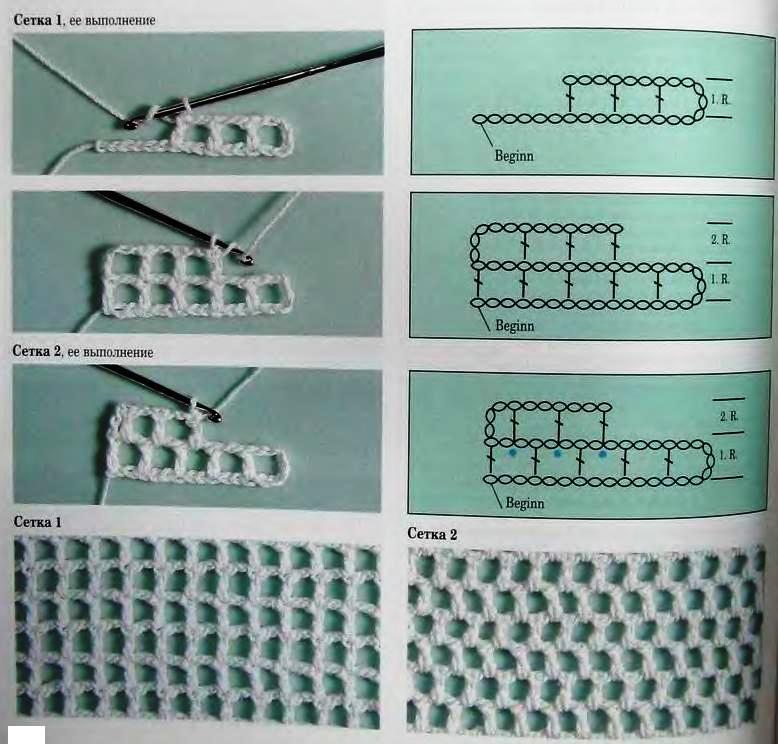
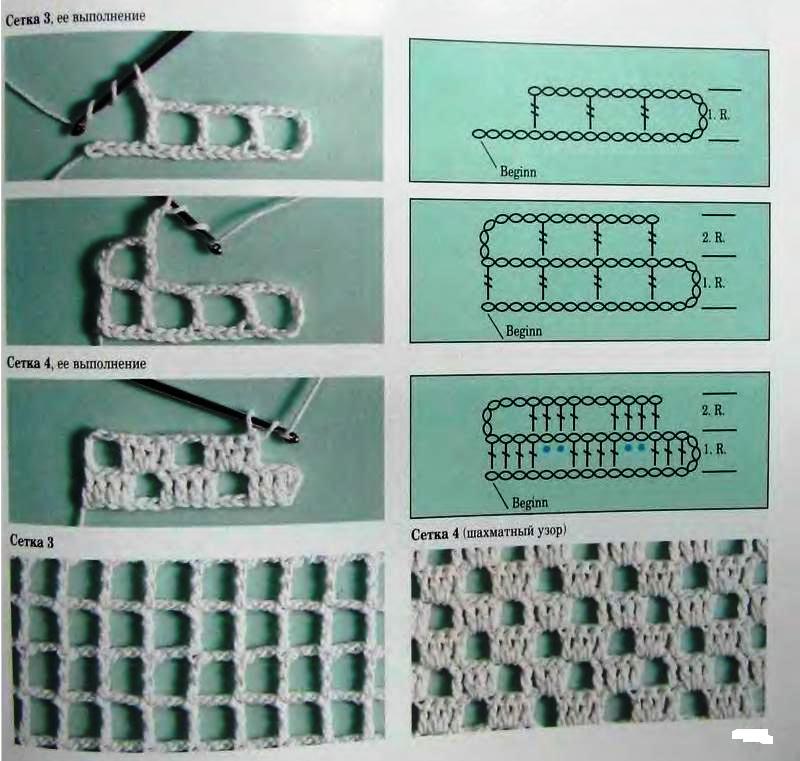
Addition of cages.
For addition of one empty cage at the beginning of row 7 air loops of rise provyazyvatsya, we turn work and we carry out the Art. with/N in column of the previous row.
For addition of cage at the end of number of provyazyvay 2 air loops also we do column with 3 nakida in the last loop of the previous row.
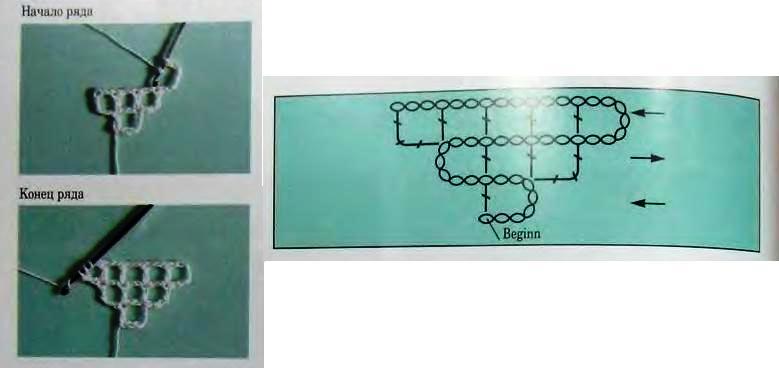
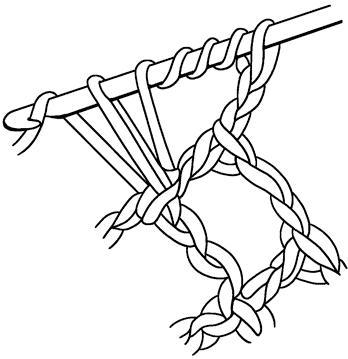
For addition of several empty cages at the beginning of row, it is necessary to calculate number of cages of rise. For example for addition of 2 cages: 3 air loops for average cage of +7 loops of rise for extreme cage, further we knit St with/N in the 8th loop from hook, 2 air loops and the Art. with/N in the last column of the previous row.
We add some empty cages at the end of row also as well as one, repeating necessary number of times and provyazyvy column with 3 nakida in middle part of the last column.
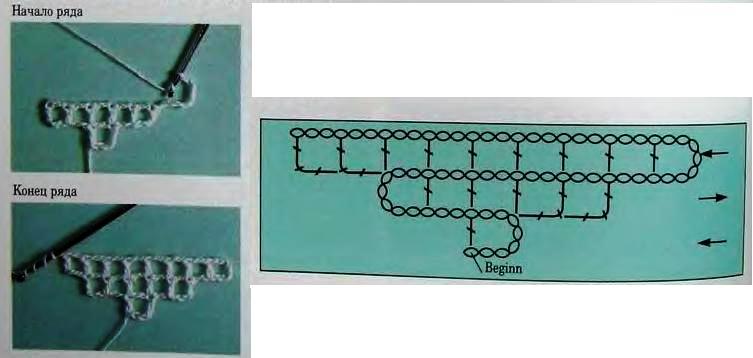
For addition of one full cage at the beginning of row we knit 5 air loops of rise and we start knitting columns with nakidy in the 3rd loop from hook, further we knit the Art. with/N in the following loop and the Art. with/Nin the last column of the previous row.
For addition of the filled cage at the end of row provyazyvay 3 columns with 2 nakida in the lower part of the previous row.
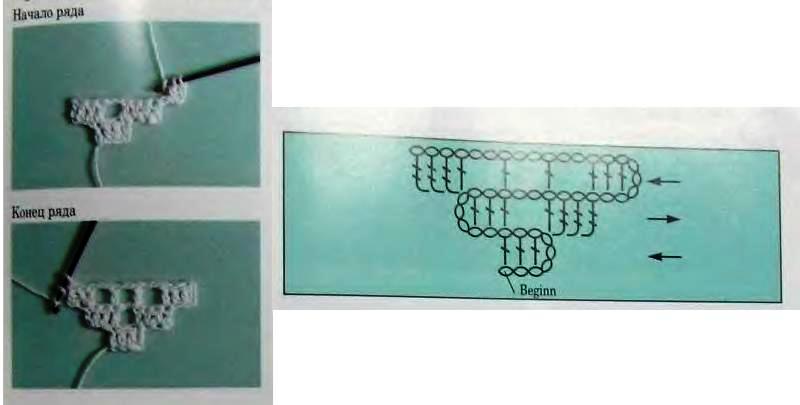
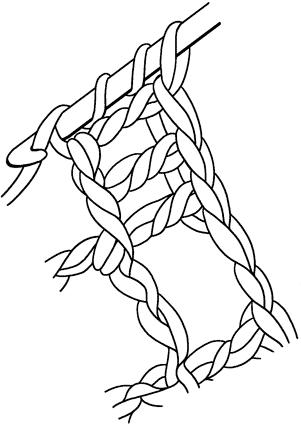
For addition of several filled cages at the beginning of row as well as for empty it is necessary to calculate quantity of air loops. For example for 2 filled cages: 3 air loops for average cage + 5 air loops of rise for extreme cage, provyazyvay them also we start knitting columns with nakidy from the 4th loop from hook.
At the end of row we add some full cages as well as one, calculating that for each cage 3 columns with 2 nakida are required.
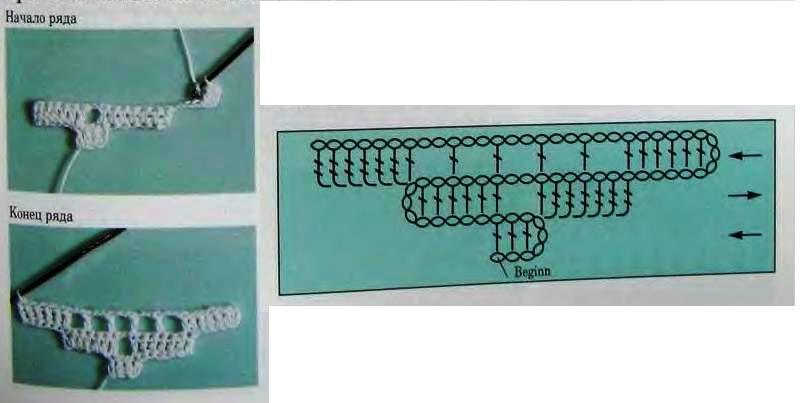
Decrease of cages.
For decrease of cages at the beginning of row pass by means of connecting columns to the necessary column of the previous row from which upper row begins and knit 5 air loops of rise.
If you need to lower cell at the end of row, it is simple not to dovyazyvayta on that quantity of cages which needs to be lowered. 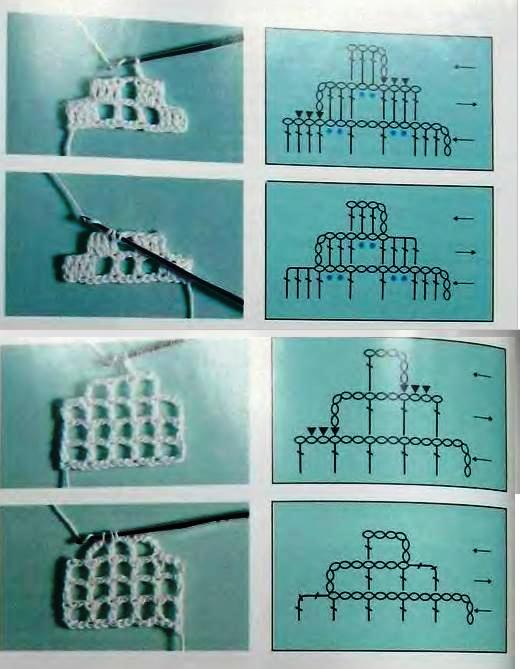
Diagonal ubavka at the beginning of row:
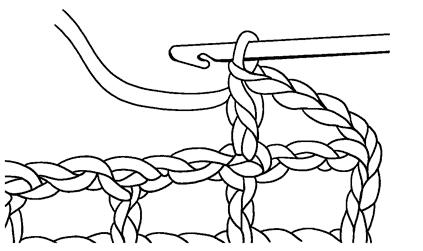
Diagonal ubavka at the end of row:
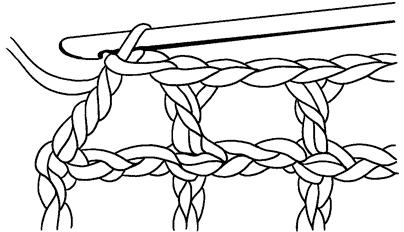
Scheme of slanting decrease of fillet grid:
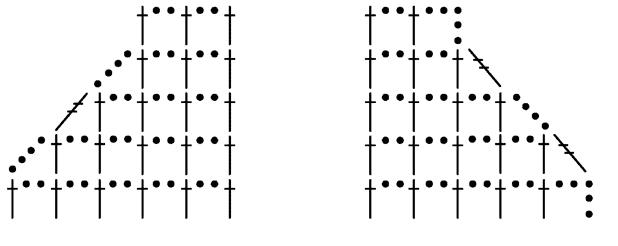
No comments:
Post a Comment